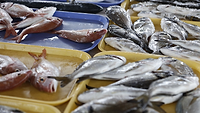EFSA Raises Concern About a Small Organic Arsenic Species in Food

Image credit: Faris Mohammed via Unsplash
The European Food Safety Authority (EFSA) has identified health risks of dietary exposure to dimethylarsinic acid (DMA), a small organic arsenic species in food. The outcomes of the new scientific opinion gives the European Commission a scientific basis for potentially setting maximum levels for small organic arsenic species in food.
Small organic arsenic species are compounds that contain methyl groups—but no other organic groups—bound to arsenic. Monomethylarsonic acid V (MMA[V]) and dimethylarsinic acid V (DMA[V]) are the most abundant of these compounds in food. The highest concentrations are found in rice, algae, and seafood.
The European Commission (EC) asked EFSA to provide four scientific opinions on arsenic in food, taking into account newly available scientific information since the last risk assessment was conducted in 2009, including new studies on the toxic effects of inorganic and organic arsenic.
The first opinion, an updated risk assessment for inorganic arsenic in food, was published in January 2024, with the conclusion that European consumers’ dietary exposure to inorganic arsenic is a health concern. The present opinion covers the risk assessment of small organoarsenic species. The third and fourth opinions will be finalized by the beginning of 2025, and they will respectively cover the risk assessment of complex organoarsenic species and of the combined exposure to inorganic and organic arsenic.
The present risk assessment was limited to MMA(V) and DMA(V) due to insufficient data on other small organoarsenic species. Nevertheless, these two are the predominant forms of small organoarsenic compounds found in food.
The data on developmental toxicity, reproductive toxicity, and neurotoxicity of MMA(V) and DMA(V) were incomplete, and the mechanisms behind their genotoxicity remain unclear. Therefore, EFSA concluded that it is not appropriate to derive health-based guidance values, and instead decided to apply a margin of exposure (MOE) approach for both compounds.
EFSA found rice and fish to be the highest contributors to the exposure to MMA(V) and DMA(V) in the human diet. While MMA(V) was determined not to pose a health concern to any age group, DMA(V) did.
More specifically, rodent studies showed that DMA(V) exposure at certain levels increased the occurrence of urinary bladder tumors. The reference point for DMA(V) was set at 1.1 milligrams per kilogram of bodyweight (mg/kg BW) per day (equivalent to 0.6 mg of arsenic/kg of BW/day). This is a conservative estimate of the lowest dose that could be associated with increased occurrence of urinary bladder tumors after exposure to DMA(V).
There is convincing evidence that DMA(V) causes cancer and EFSA concluded that it is likely to be genotoxic. Therefore, EFSA concluded that an MOE of 10,000 or higher is necessary for DMA(V) to be unlikely to pose a health concern. For DMA(V), calculated MOEs were below 10,000 in many cases across dietary surveys and age groups, in particular for some groups of high consumers.
Looking for a reprint of this article?
From high-res PDFs to custom plaques, order your copy today!










